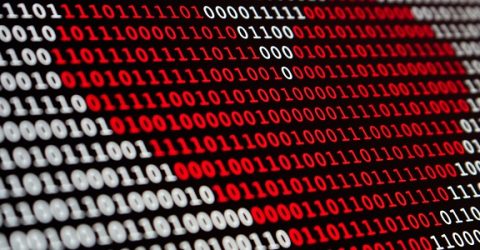What is binary data?
We talk about binary data all the time, but it’s not immediately obvious what this term means – or how it’s measured

Computers are amazingly complex machines, capable of performing functions that would have seemed inconceivable even a generation ago.
Similarly, the internet has transformed how we work, rest and play.
Whether you’re attending a Teams meeting on an iPad, watching The Crown via Netflix or playing Dirt 5 on your Xbox, everything is reliant on digital data.
Specifically, it’s reliant on binary data – the only instructions any electronic device really understands.
If you’re not sure what binary data is, you can replicate it with any household switch. On or off, zero or one.
Everything a computer, games console or smartphone does is instructed in binary language, with endless sequences of zeroes and ones.
Programming languages like HTML and C++ allow us to encode this binary data in a way that makes sense to us.
Computers then have to translate our programming languages into binary to action these instructions.
As such, it seems even more astonishing that modern electronic devices are capable of so many things.
The measurements used for binary data also materially affect everything from the smartphones we buy to the broadband contracts we enter into.
Byte down hard
A bit is a single binary choice – zero or one. It’s the smallest unit of digital data in existence, and as we’ve seen, it forms the underpinnings of everything else.
However, a solitary bit is pretty insignificant in terms of what it can convey.
Bits are typically compiled into blocks of eight, known as bytes. With a total of 256 different outcomes, a byte is an information block capable of conveying far more information.
However, you still need a lot of bytes to perform specific functions.
A typical smartphone camera image will be several megabytes in size – several million bytes of data that explains exactly which colour each pixel should be.
A movie on Netflix will be a couple of gigabytes in size – several billion bytes.
We refer to bytes with an uppercase B, typically preceded by a multiplier. KB for kilobytes, MB for megabytes, GB for gigabytes, TB for terabytes.
You’ll recognise this from file sizes, and also data storage. Your new smartphone might have a 64GB memory, while cloud storage may be 1TB (a terabyte is 1,000,000,000,000 bytes).
Just a little bit
A bit is the unit of measurement for data transfers and connection speeds.
Because it’s smaller than a byte, it’s indicated using a lowercase b.
Your line speed might be 10Mbps, which means ten million bits (10Mb) of data can travel along it per second (ps).
MoreGet help with broadband jargon
As with data storage, this scales up and down – a gigabit broadband connection can conduct a billion bits of data per second.
The difference between bits and bytes is like the difference between one teaspoon and one tablespoon in a recipe.
Theoretically, a 10MB file being distributed along a 10Mbps line would take eight seconds to arrive, because the former is eight times larger than the latter.
And at the heart of every download, document and digital file is an incalculably long string of zeroes and ones.






